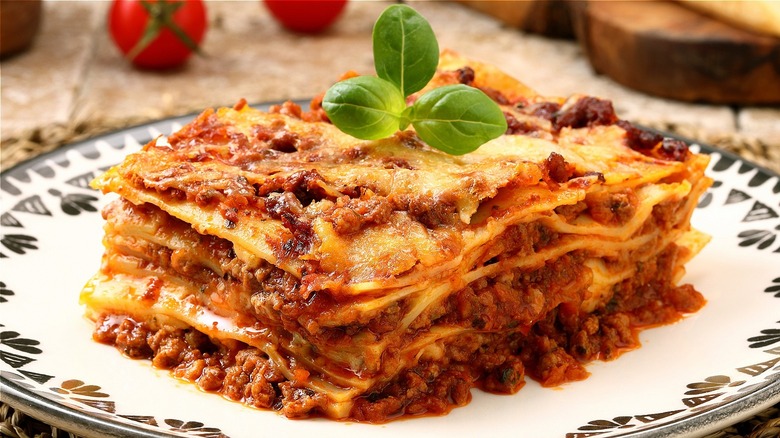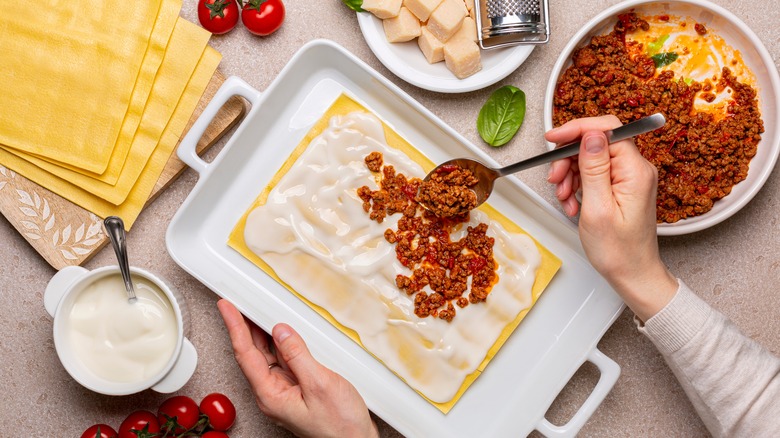The Reason You Should Think Twice Before Adding Ricotta To Lasagna
Americans lump Italian food into one bucket; however, the cuisine vastly differs between its 20 regions, each putting its spin on dishes and highlighting local ingredients. Coastal communities focus on fish, while an hour inland, the cuisine is based on whatever animal is roaming the landscape. The cooking is simple and seasonal, using quality ingredients meant to shine, not be masked under sauces or cheese. Chef Ali LaRaia, the cofounder of New York restaurant The Sosta, says, "Europe has the original farm-to-table cuisine," via Insider.
Among the numerous culinary delights Italians have given us, lasagna is one of the most popular. Still, like every Italian dish, regional differences and holiday variations set each of them apart. According to La Cucina Italiana, southern Italians assemble lasagna with dried sheets of pasta topped with meat ragú, cow's milk ricotta, and mozzarella. Whereas, in the north, lasagna resembles the Italian flag with paper-thin green sheets of fresh spinach egg pasta layered with Bolognese sauce, béchamel sauce, and grated Parmigiano Reggiano cheese. In between, regional lasagna recipes use different sauces or broth, vegetables, and cheeses.
While ricotta and béchamel sauce are both popular options in the U.S., ricotta is readily available in grocery stores, unlike béchamel, which creates an additional step to the already time-consuming dish. For the creamiest lasagna, however, you may want to think twice before adding ricotta and carve out a few more minutes.
Use béchamel sauce
Whether you use homemade sheets of pasta, no-cook, or boiled ruffle-edged lasagna noodles, creating the right balance of ingredients is critical to creating the perfect moist lasagna. While controversial, spreading ricotta on pasta sheets makes for a drier lasagna than adding a béchamel sauce between the layers (no offense, nonna).
Béchamel, or besciamella in Italian, is a white sauce made from butter, flour, and milk seasoned with salt, pepper, and nutmeg. It is considered one of the "mother sauces" since it's the basis for other cream sauces. Béchamel begins by sautéing flour and butter to make a pale roux. Hot milk and the seasonings are whisked into the roux and cooked for another 15 minutes resulting in a thick, glossy sauce that stars in other comfort foods like mac 'n cheese (per Los Angeles Times).
Unlike ricotta, lumpy like cottage cheese, béchamel is a pourable, velvety sauce that allows you to stack many thin, flavorful layers in a lasagna. The creamy sauce is spreadable, coating each layer, keeping the dish from drying out, and balancing the tomato sauce's acidity. Whereas when baked, ricotta dries and may develop a cracked texture, per Bon Appétit.
The laborious dish with rich ingredients is celebratory enough to serve during the holidays, thoughtful enough to bring to a friend's house in need of comfort and care, and oh-so-delicious, especially on cold winter days.

